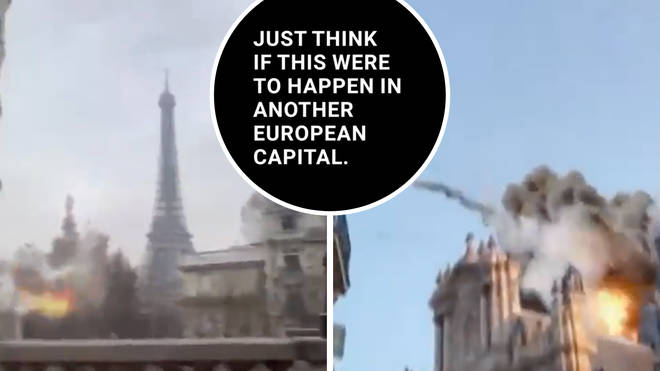What Happens If Ukraine Falls?
Thoughts in and around geopolitics.
I recently wrote about Russian preparations for a major offensive in Ukraine: a pincer movement that would close Ukrainian forces in from the north and the south. There is now general discussion of such a move by Russia in the next months, albeit configured in many different ways, most different from mine. Still, the important issue is whether Ukraine can defeat such an attack. Over the past year, Ukraine has fared much better than expected, and Russia much worse. But major powers have the luxury of early stumbling, their size giving them the resources needed to recover from early defeats. The successes of weaker powers sometimes die on the vine. And though Russia could, in theory, hold on and send Ukraine reeling through sheer stamina, doing so would be a move of last resort. Such is the uncertainty of war.
 Belarus seems to be thinking of entering the war, and though its
utility is limited, its knowledge of the balance of power in Ukraine
could be beneficial to Moscow. Russian aircraft – and intelligence
operatives, I suspect – are now operating in Moldova, and Romania, its
neighbor and occasional protector, is on alert. Anxieties are high.
France and other European countries have ordered their nationals to
leave Belarus, and the U.S. has warned its citizens to leave Russia.
Belarus seems to be thinking of entering the war, and though its
utility is limited, its knowledge of the balance of power in Ukraine
could be beneficial to Moscow. Russian aircraft – and intelligence
operatives, I suspect – are now operating in Moldova, and Romania, its
neighbor and occasional protector, is on alert. Anxieties are high.
France and other European countries have ordered their nationals to
leave Belarus, and the U.S. has warned its citizens to leave Russia.
If the Ukrainians can no longer resist effectively, and if the flanks represented by Belarus and Moldova are opening a path to Poland and Romania, what will the United States do? Europe will follow Washington’s lead, for better or worse. The worst-case scenario, of course, would be the war that was avoided during the Cold War. That war never happened because Russia did not have the power to engage and defeat NATO and its U.S. benefactors. The Russians were not prepared to attack given the risk of failure and the riskier, albeit unlikely, possibility of a nuclear exchange.
Still, the U.S. must consider the risks of intervention. If Russia occupies Ukraine, it would effectively border Poland, Slovakia, Hungary and Romania. It’s no secret that President Vladimir Putin, an ex-KGB operative, considers the collapse of the Soviet Union a geopolitical catastrophe, which means he may well see the collapse of Russian power in Central Europe equally lamentable. A return to the borders of the Cold War after defeating Ukraine would go far in redeeming Russia’s geopolitical position. And it would raise the question of whether and when Russia would press farther west. It would put Europe in a position it never conceived it would be in: living with a hostile and powerful enemy at its border, and a not-always-predictable America guaranteeing its frontiers.
Now, as always, Russian occupation of Europe would threaten U.S. control of the Atlantic – something for which Washington fought two world wars. Under those circumstances, it would more easily justify direct American intervention. After all, it would be able to maneuver more easily in Ukraine, and it would have a network of allies near and needy.
If Ukraine’s defenses crumble, the U.S. would have to make some rapid decisions (or rapidly implement decisions already made). It could send forces into Ukraine to try to force a Russian retreat, or it could decline combat. Directly engaging Russian troops with limited force can be a long, painful and uncertain engagement. But accepting the outcome opens the door for Russia to rearrange Europe again. A second cold war would be a necessary but undesired outcome. Reinforcing Ukraine before its collapse would therefore be the lower risk and cost option.
If Ukraine falls, the U.S. will be forced to engage Russia. Fighting directly in Ukraine will be a choice, which means doing so will be politically painful. Presidents are rarely rewarded for avoiding a threat that has not yet materialized, even if it’s inevitable.
I am not predicting the imminent fall of Ukraine, of course. I’m simply gaming out all the options if it does fall. Prudence – and the coming Russian offensive – demands it.








No comments:
Post a Comment
Note: Only a member of this blog may post a comment.